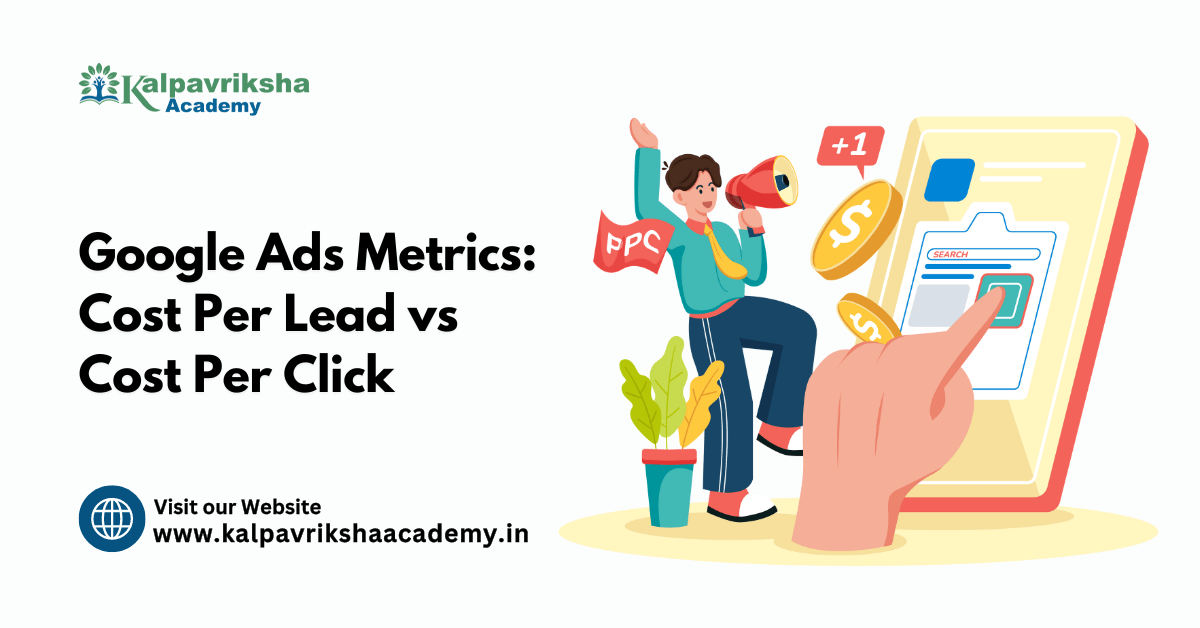Every business advertising online wants to know how much the cost they are paying to reach people. To measure the cost there are two metrics that are Cost Per Click (CPC) and Cost Per Lead (CPL).
What is CPC?
The cost paid by an advertiser whenever someone clicks on their ad is known as CPC. For example; Suppose you are an advertiser then if someone sees your ad and clicks on it, you have to pay a certain amount for each click.
How to Calculate CPC?
CPC = Total ad spend / Total number of clicks

What is CPL?
Everyone who clicks on ads is not considered a lead, but the advertiser has to pay for each click. It doesn’t matter if the clicks are leads or not. Therefore, the total cost that the advertiser has to pay to acquire this customer or lead is known as CPL. A lead is nothing but the person who shows interest in the product, such as filling out a form to learn more.
Overall, these two metrics help advertisers know how much money they are spending to attract attention and leads online.
How to Calculate CPL?
CPL= Total advertising cost/ Total number of Leads

Benefits of Google Ads Metrics
When it comes to Google Ads, advertisers use different methods to measure how well their ads are performing. As you read above two most common metrics of measuring the advertising costs. Each of them has its own benefits that can help companies make better decisions about their advertising strategies.
- CPC is great for controlling the amount of money spent on advertising. It ensures that advertisers only pay when someone actually clicks on the ad, which helps them know if their ads are reaching the right people. It is a good way to focus on truly interested audiences.
- CPL on the other hand, is more about tracking the number of people who are seriously interested in what the company has to offer. It focuses on the leads that are in the sales funnel, i.e. those closest to making a decision. This method helps businesses optimise their campaigns and spend money wisely to get the best results.
6 Factors Affecting Google Ads Cost
These are some factors that influence the cost of the Google Ads:-
1. Industry
The Google ads cost depends on the types of the business. Some industries are more competitive, so their ads cost more per click. For example, real estate may pay more because getting one client can bring in a lot of money.
2. Bidding Strategy
You decide how much you want to pay for each click (manual bidding) or let Google decide for you (automated bidding). Automated bidding uses smart algorithms to help you get more clicks or conversions within your budget.
3. Schedule
Google ads cost more or less depending on when they run. You can choose to show your ads during busy times to reach more people, but that might cost more. Running ads during off-peak hours can save you money.
4. Device Targeting
Ads can be shown on mobile phones, tablets or computers. Mobile advertising often costs less because more people are using their phones. Desktop advertising may cost more because fewer people use computers.
5. Trends
As more businesses use Google Ads, prices rise. If people click on ads more, competition increases, and you may pay more per click. It’s important to adjust your strategy to stay competitive.
6. Campaign Management Fees
If you hire an expert to manage your Google Ads, they may charge you a flat fee or a percentage of your budget. Although this increases your cost, it can help improve the performance of your ads.
How to Improve CPC and CPL?
Optimization of CPC and CPL in online advertising, can help you get most of your money. Whether you’re running Google Ads to achieve your business goals, social media, or other platforms, tweaking certain elements can make a big difference in how much you pay and how effective your ads are. These are some simple ways you can improve both CPC and CPL, so you can attract more people within your budget.
For improving CPC, you need to refine your audience and keywords, expand your reach, adjust your bids, and prevent fraud.
On the other hand, to improve CPL, you need to improve your ad quality, refine keywords, adjust bids, and continuously test your campaigns to attract more valuable leads at a lower cost.
Refrences
Cost per Lead vs Cost per Click
Cost per click (CPC) vs Cost per lead (CPL)










